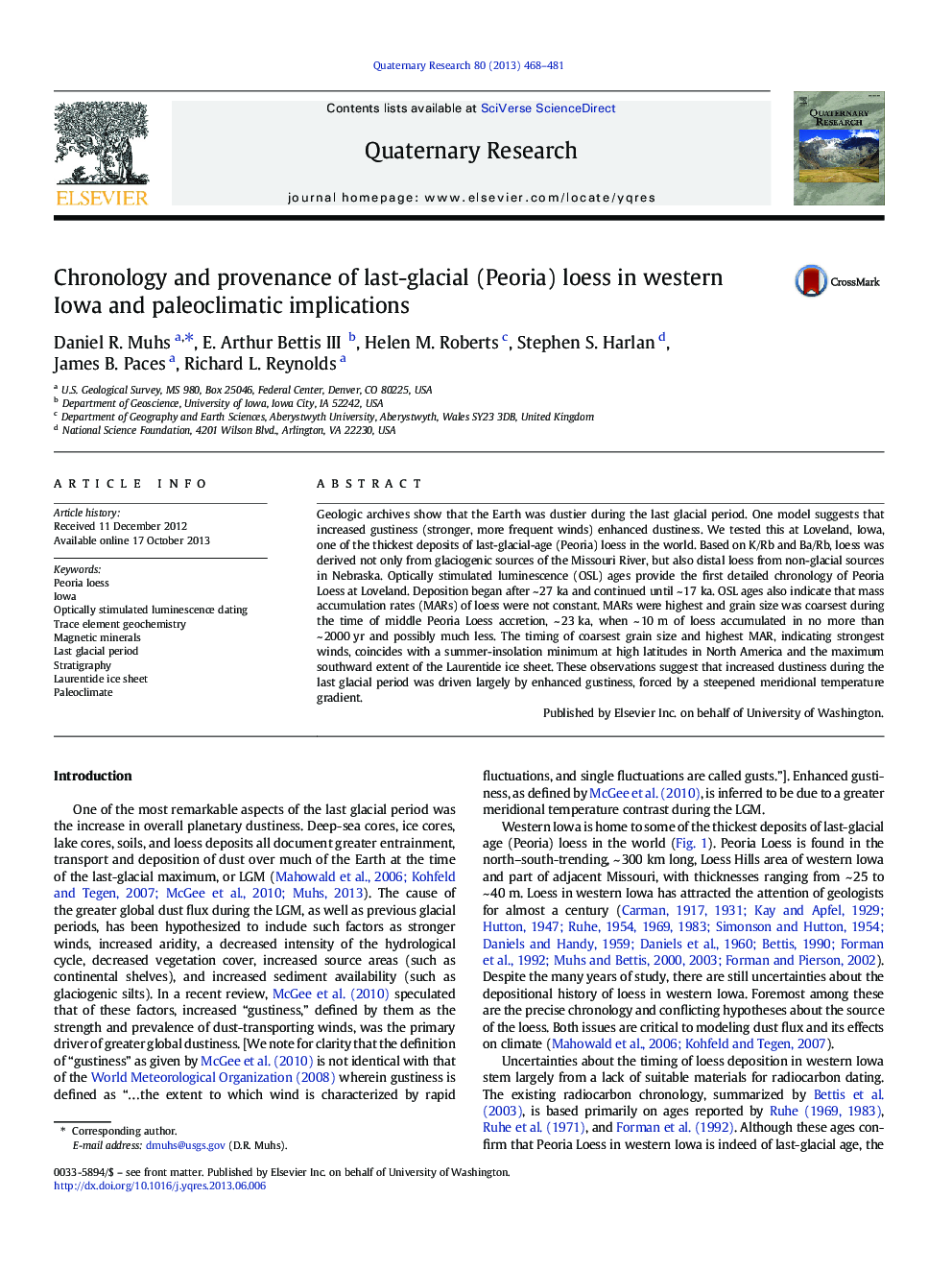| کد مقاله | کد نشریه | سال انتشار | مقاله انگلیسی | نسخه تمام متن |
|---|---|---|---|---|
| 1045293 | 1484333 | 2013 | 14 صفحه PDF | دانلود رایگان |

Geologic archives show that the Earth was dustier during the last glacial period. One model suggests that increased gustiness (stronger, more frequent winds) enhanced dustiness. We tested this at Loveland, Iowa, one of the thickest deposits of last-glacial-age (Peoria) loess in the world. Based on K/Rb and Ba/Rb, loess was derived not only from glaciogenic sources of the Missouri River, but also distal loess from non-glacial sources in Nebraska. Optically stimulated luminescence (OSL) ages provide the first detailed chronology of Peoria Loess at Loveland. Deposition began after ~ 27 ka and continued until ~ 17 ka. OSL ages also indicate that mass accumulation rates (MARs) of loess were not constant. MARs were highest and grain size was coarsest during the time of middle Peoria Loess accretion, ~ 23 ka, when ~ 10 m of loess accumulated in no more than ~ 2000 yr and possibly much less. The timing of coarsest grain size and highest MAR, indicating strongest winds, coincides with a summer-insolation minimum at high latitudes in North America and the maximum southward extent of the Laurentide ice sheet. These observations suggest that increased dustiness during the last glacial period was driven largely by enhanced gustiness, forced by a steepened meridional temperature gradient.
Journal: Quaternary Research - Volume 80, Issue 3, November 2013, Pages 468–481